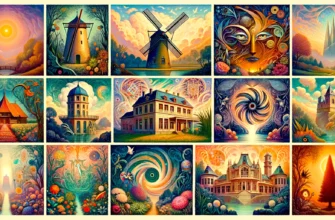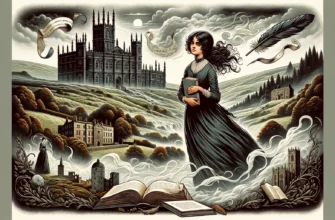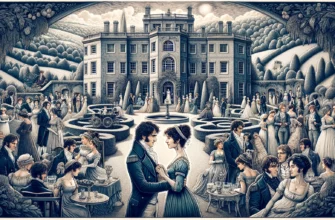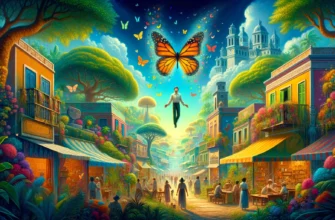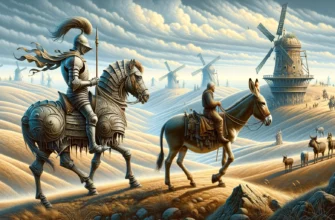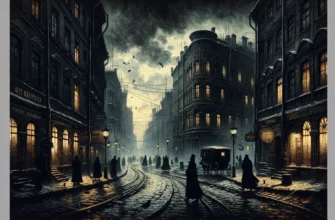Romance novels: Timeless Tales of Love
Romance novels explore the essence of human emotion, focusing on love. These stories transport readers to different times and places, offering a glimpse into the lives of the characters who experience the highs and lows of romance.
The best romance novels tell compelling love stories while providing insight into human nature. They make us laugh, cry, and believe in love’s power.
This article presents the 15 best romance novels of all time. These books have captivated readers for generations, becoming timeless classics. Each novel offers a unique take on love, from the witty banter of Jane Austen’s heroines to the passionate turmoil of Emily Brontë’s characters.
These novels capture the many facets of romance, each bringing a unique perspective to the theme of love. They resonate deeply with readers and leave a lasting impact.
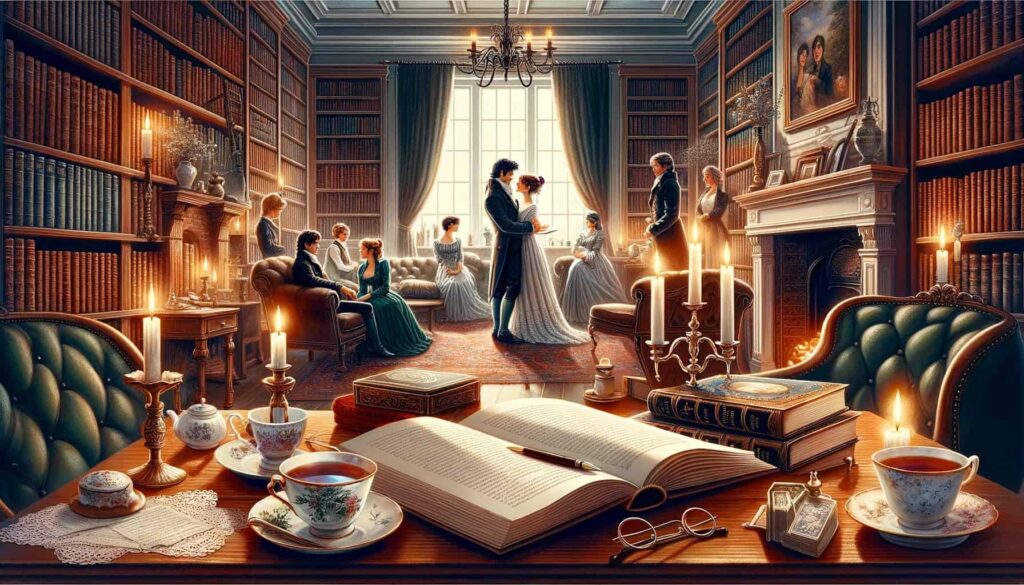
Best Romance Novels
- Pride and Prejudice by Jane Austen
- Jane Eyre by Charlotte Brontë
- Gone with the Wind by Margaret Mitchell
- Anna Karenina by Leo Tolstoy
- Wuthering Heights by Emily Brontë
- Outlander by Diana Gabaldon
- The Notebook by Nicholas Sparks
- P.S. I Love You by Cecelia Ahern
- Me Before You by Jojo Moyes
- The Time Traveler’s Wife by Audrey Niffenegger
- The Thorn Birds by Colleen McCullough
- Bridget Jones’s Diary by Helen Fielding
- The Princess Bride by William Goldman
- Eleanor & Park by Rainbow Rowell
- The Fault in Our Stars by John Green
The best best romance novels all time capture the essence of love, with unforgettable characters and timeless stories. From classic tales to modern masterpieces, these books explore the depths of human emotion, showing how love can inspire, challenge, and transform lives.
Pride and Prejudice by Jane Austen
Jane Austen’s “Pride and Prejudice” centers on Elizabeth Bennet, one of five sisters in a sophisticated but financially modest family. The story unfolds in the English countryside, where societal expectations and personal aspirations collide.
Elizabeth’s sharp wit and independent spirit set her apart, making her a memorable protagonist. She encounters Mr. Darcy, a wealthy and seemingly aloof gentleman.
Their initial interactions brim with misunderstandings and prejudices, highlighting the novel’s themes of class and character.
Elizabeth’s relationship with Mr. Darcy evolves as the narrative progresses. Initially, she finds him proud and disdainful. However, her perceptions shift as she learns more about his true nature.
This change mirrors Darcy’s transformation, driven by his growing admiration for Elizabeth’s intelligence and integrity.
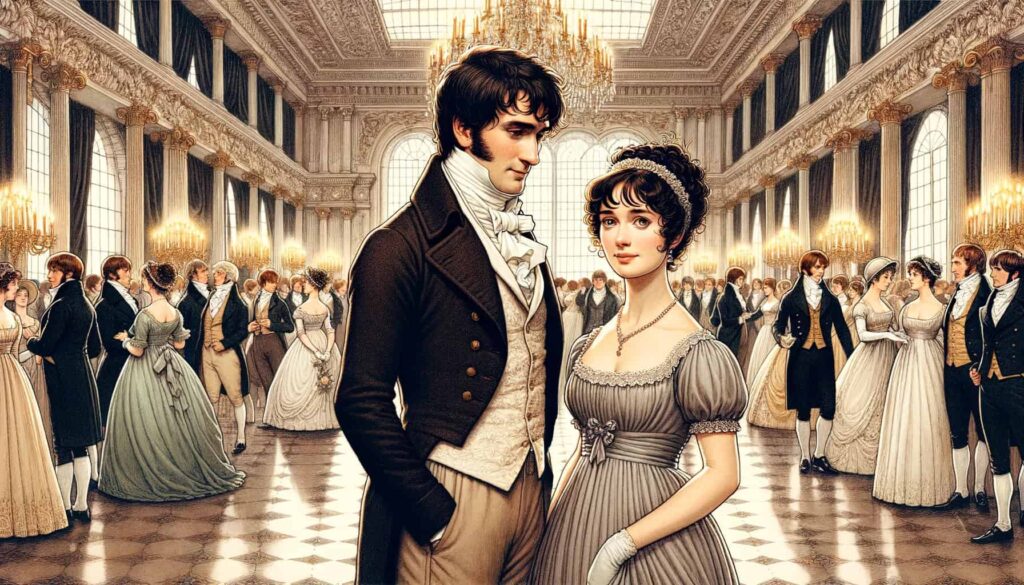
Austen masterfully depicts this gradual change, weaving in subplots involving other characters, like the charming but duplicitous Mr. Wickham and Elizabeth’s own family dynamics.
The novel culminates in Elizabeth and Mr. Darcy’s union, symbolizing the triumph of mutual respect and love over initial prejudice and misunderstanding. Austen’s portrayal of their relationship offers a nuanced exploration of human flaws and virtues.
“Pride and Prejudice” remains a beloved classic, celebrated for its engaging characters and incisive social commentary. Austen critiques societal norms through Elizabeth and Darcy while celebrating personal growth and true affection.
Jane Eyre by Charlotte Brontë
“Jane Eyre” by Charlotte Brontë follows the life of its titular character, an orphaned girl who faces a harsh upbringing. Jane endures cruelty at her aunt’s home and later at Lowood School, where she finds a friend in Helen Burns and a mentor in Miss Temple.
Despite the adversity, Jane’s resilience and intelligence shine through. Her spirit and moral integrity shape her journey and decisions.
Jane becomes a governess at Thornfield Hall, where she meets the enigmatic Mr. Rochester. Their relationship grows as they converse and share experiences. Jane is undeniably attracted to Rochester, and he appreciates her strong character and intellect.
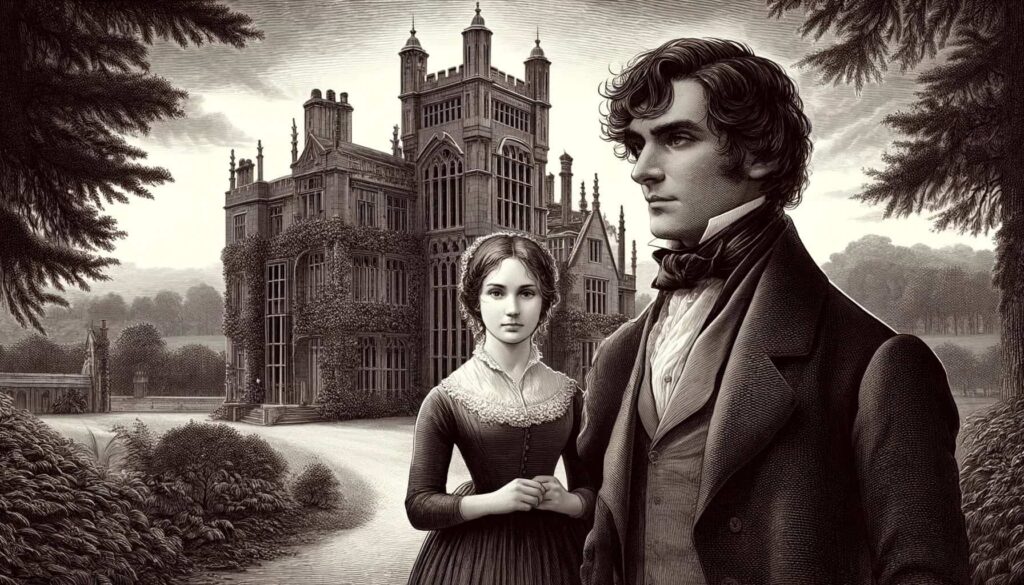
However, Thornfield hides a dark secret: Mr. Rochester’s wife, Bertha Mason, is confined in the attic due to her madness. This revelation disrupts Jane’s plans and forces her to leave.
Jane rebuilds her life, discovering her true family and gaining independence. Ultimately, she returns to Thornfield, finding it in ruins after Bertha fires it. She reunites with a now-blinded Rochester. Their love endures, and they marry, overcoming past obstacles.
“Jane Eyre” stands out for its exploration of social class, morality, and the pursuit of personal happiness. It showcases Brontë’s powerful narrative and complex characters.
Gone with the Wind by Margaret Mitchell
Margaret Mitchell‘s “Gone with the Wind” tells the story of Scarlett O’Hara, a headstrong Southern belle who lived during the Civil War and Reconstruction. Scarlett’s life changes dramatically when the war disrupts the Southern way of life.
She faces loss and hardship, but her determination to survive and thrive remains unshaken. Scarlett’s love for Ashley Wilkes, who marries his cousin, Melanie, drives much of her actions and decisions.
Scarlett’s complex relationship with Rhett Butler is central to the novel. Rhett, a roguish and wealthy man, admires Scarlett’s fiery spirit. Their interactions are marked by conflict, passion, and mutual attraction.
Scarlett marries Rhett after a series of tumultuous events, including the deaths of her first two husbands. Despite their volatile relationship, they share moments of genuine connection and understanding.
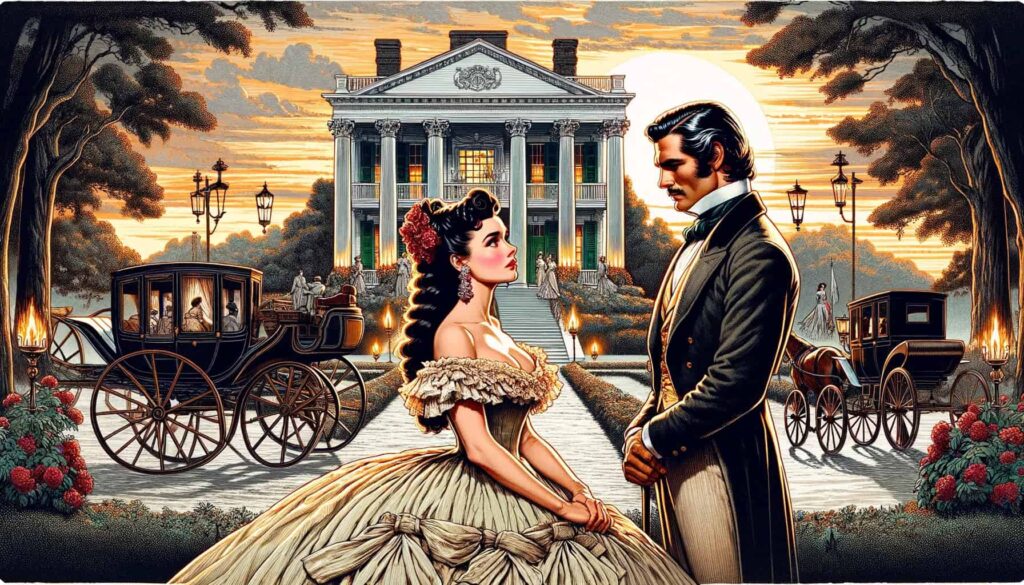
The novel also depicts the transformation of the South from a society based on slavery and agriculture to one struggling with its new reality. Scarlett’s journey mirrors this transformation as she shifts from a pampered young woman to a determined businesswoman.
She takes charge of her family’s plantation, Tara, and ventures into business to ensure its survival. Her relentless drive often leads her to make morally questionable decisions, highlighting her complex character.
As the story concludes, Scarlett’s relentless pursuit of her desires leads to personal losses. Rhett leaves her after the death of their daughter, Bonnie. Scarlett’s realization of her true feelings for Rhett comes too late. The novel ends with Scarlett vowing to win Rhett back, showing her unyielding spirit.
“Gone with the Wind” remains a vivid portrayal of love, resilience, and the changing South, showcasing Mitchell’s ability to create enduring characters and an epic narrative.
Anna Karenina by Leo Tolstoy
“Anna Karenina” by Leo Tolstoy opens with the troubled marriage of Stepan Arkadyevitch and Darya Alexandrovna. This domestic discord sets the stage for the novel’s exploration of love and morality.
Anna Karenina, Stepan’s sister, arrives in Moscow to help mend her brother’s marriage. She meets Count Alexei Vronsky during her visit, sparking a passionate affair that defies societal norms.
Anna’s affair with Vronsky disrupts her life. She leaves her husband, Alexei Karenin, and their son, Seryozha. Her decision to pursue a relationship with Vronsky isolates her from society. Despite their love, Anna struggles with guilt and social ostracism.
The scandal also affects Vronsky’s career and social standing. Their once-passionate relationship becomes strained as they face increasing pressures.
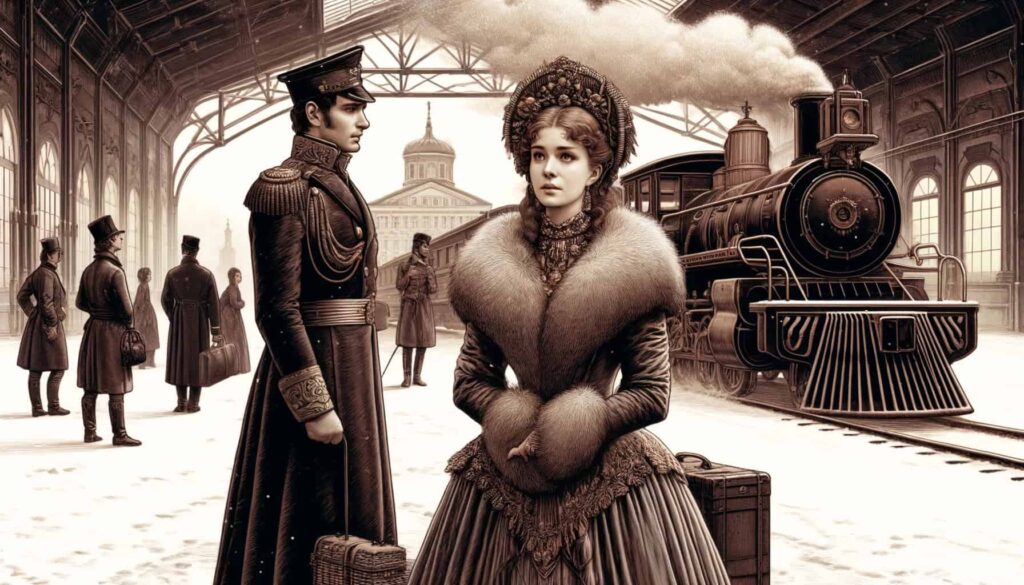
Parallel to Anna’s story, Tolstoy presents the life of Konstantin Levin. Levin, a landowner, seeks meaning through work and family. His love for Kitty, initially unrequited, eventually leads to marriage.
Levin’s story contrasts with Anna’s, highlighting different approaches to love and fulfillment. Levin’s struggles with faith and purpose provide a philosophical counterpoint to the romantic turmoil.
Anna’s increasing despair leads to her tragic end. She feels abandoned by Vronsky and hopeless about her future. She commits suicide by throwing herself under a train, a grim reflection of her inner turmoil.
Tolstoy uses her fate to comment on the rigid social structures and the destructive power of unattainable desires. “Anna Karenina” remains a powerful study of love, society, and human frailty, capturing Tolstoy’s profound insights into the human condition.
Wuthering Heights by Emily Brontë
“Wuthering Heights” by Emily Brontë tells a tale of intense and destructive love. The story unfolds through the narration of Mr. Lockwood, a tenant at Thrushcross Grange. He learns about the Earnshaw and Linton families from Nelly Dean, the housekeeper.
The passionate, tumultuous relationship between Heathcliff and Catherine Earnshaw is at the heart of the story. Their fierce and consuming love defies social norms and moral boundaries.
Heathcliff, an orphan brought to Wuthering Heights by Mr. Earnshaw, forms a deep bond with Catherine. Their connection is intense, almost elemental. However, when Mr. Earnshaw dies, Heathcliff’s status diminishes. Hindley, Catherine’s brother, treats him cruelly.
Despite this, Heathcliff and Catherine remain close. Catherine’s decision to marry Edgar Linton, a wealthy neighbor, devastates Heathcliff. He leaves Wuthering Heights, only to return years later, wealthier and bent on revenge.
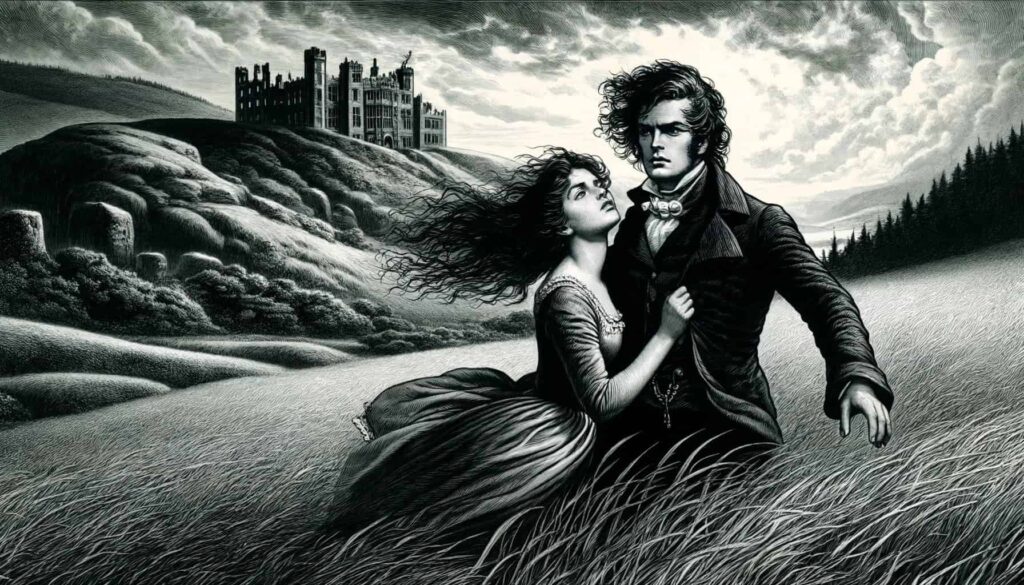
Heathcliff’s return sets off a chain of tragic events. He seeks vengeance on those who wronged him, including Hindley and Edgar. He manipulates the lives of the next generation, continuing the cycle of pain and revenge. His love for Catherine remains, even after her death.
Heathcliff’s obsession drives him to madness, haunting him until his own death. The novel’s dark, gothic atmosphere and complex characters create a haunting narrative.
The novel ends with the possibility of redemption. Catherine and Heathcliff’s destructive love contrasts with the more hopeful relationships of the younger generation. Despite their troubled start, Hareton Earnshaw and Cathy Linton find a way to heal and love.
Their union suggests that love can find peace even after enduring pain and conflict. “Wuthering Heights” remains a powerful exploration of love, revenge, and the human soul, reflecting Brontë’s unique literary vision.
Outlander by Diana Gabaldon
“Outlander” by Diana Gabaldon begins with Claire Randall, a former combat nurse, enjoying a second honeymoon in Scotland with her husband, Frank.
Claire touches one during a walk near standing stones and is transported back to 1743. Confused and alone, she finds herself in a world far from hers. Her struggle to understand her new reality and survive sets the stage for the following adventure.
Claire meets Jamie Fraser, a young Scotsman with a troubled past. Forced by circumstances, they marry to protect Claire. Their relationship, initially one of necessity, grows into a deep, passionate bond. Claire grapples with her feelings for Jamie while remembering her life with Frank.
This emotional conflict adds depth to her character and their relationship. Jamie’s bravery and loyalty contrast with the dangers and betrayals they face.

The political backdrop of 18th-century Scotland adds complexity to their story. Claire and Jamie navigate the tensions between the Scottish clans and the British Army. Claire’s knowledge of future events influences their actions, creating suspense.
They face numerous threats, including the sadistic British officer Captain Jack Randall, Frank’s ancestor. The historical setting enriches the narrative, seamlessly blending romance and adventure.
As the story progresses, Claire’s loyalty to Jamie solidifies. They endure trials, from battles to personal losses. Their love, forged in hardship, becomes a source of strength. Claire’s choice to stay with Jamie, despite a chance to return to her time, underscores her deep commitment.
“Outlander” masterfully combines historical detail, romance, and adventure, making it a compelling read. Gabaldon’s vivid characters and intricate plot captivate readers, offering a timeless tale of love and resilience.
The Notebook by Nicholas Sparks
“The Notebook” by Nicholas Sparks tells the love story of Noah Calhoun and Allie Nelson. The story begins in a nursing home, where an elderly man reads a love story from his notebook to a fellow patient.
The tale he recounts is their own, revealing a past filled with deep emotion and enduring commitment. This narrative framework sets the stage for the novel’s exploration of love and memory.
Noah and Allie first meet during a summer in the 1930s in North Carolina. They fall deeply in love, but societal differences and parental disapproval separate them. Allie comes from a wealthy family, while Noah is a poor lumber mill worker.
Despite their strong feelings, Allie’s parents pressure her to marry a more suitable suitor. This separation leads to years of silence and longing, with both characters leading separate lives.
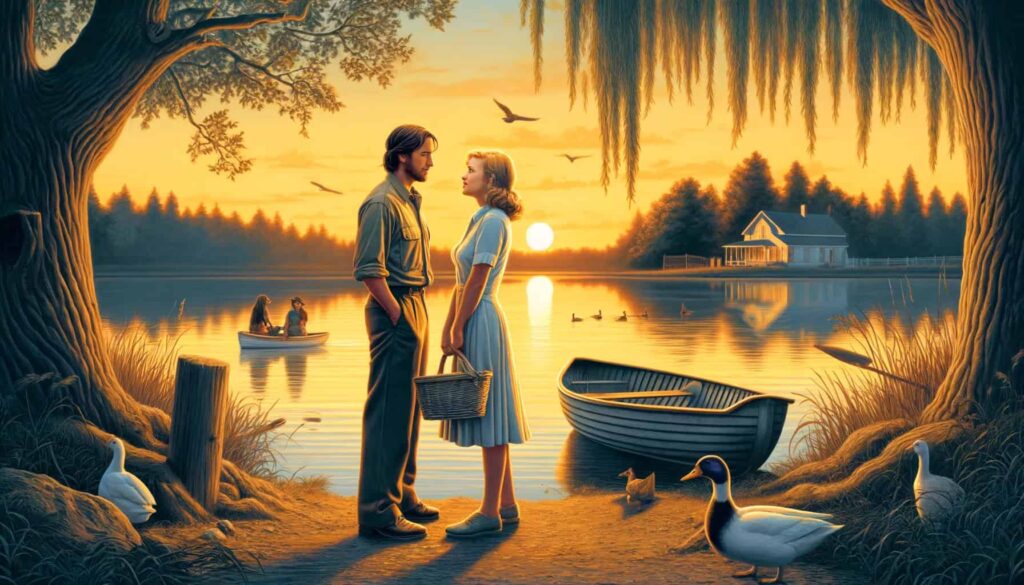
Years later, Allie, now engaged to another man, sees a newspaper article about Noah restoring an old house. Drawn back to him, she visits Noah, and their rekindled connection reignites their old flame.
Their reunion is bittersweet, filled with the tension of unresolved emotions and the choices that lie ahead. Allie must decide between her comfortable life with her fiancé and her deep love for Noah. This choice highlights the novel’s central theme of enduring love.
The novel concludes by revealing that Noah and Allie are the elderly couple in the nursing home. Noah’s reading of their love story to Allie, who suffers from Alzheimer’s, represents his unwavering devotion. Despite her illness, moments of clarity allow Allie to remember their shared past.
Their story emphasizes the power of love to endure through time and hardship. “The Notebook” resonates with readers through its portrayal of a love that lasts a lifetime, demonstrating Sparks’s ability to capture the essence of true love.
P.S. I Love You by Cecelia Ahern
“P.S. I Love You” by Cecelia Ahern begins with the protagonist, Holly Kennedy, grieving the death of her husband, Gerry. Gerry’s passing leaves Holly devastated and lost.
Their love is deep, and his absence creates a void in her life. Holly’s journey through grief and healing forms the crux of the novel. Gerry’s love for Holly extends beyond his death, guiding her through her darkest days.
Knowing his death is imminent, Gerry leaves Holly a series of letters. Each monthly letter contains a task or message designed to help Holly move forward. The letters serve as a lifeline, offering comfort and a sense of Gerry’s presence.
Holly follows his instructions, from buying a bedside lamp to singing karaoke. These seemingly simple tasks help Holly reconnect with life and rediscover joy.
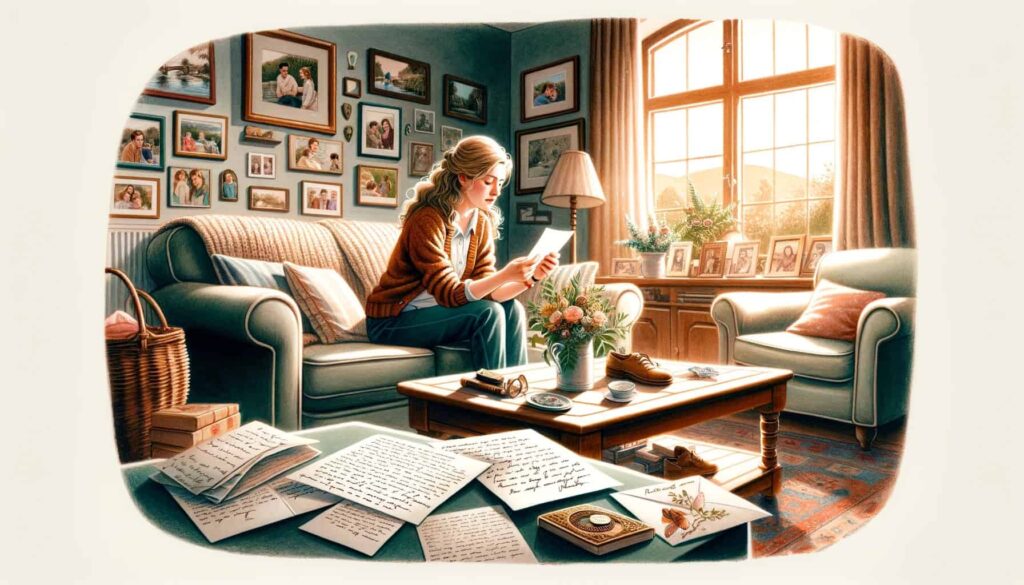
As Holly completes each task, she begins to heal. The letters encourage her to leave her comfort zone and embrace new experiences. She reconnects with friends and family, who provide support and companionship.
Holly’s journey is not without setbacks, but Gerry’s words strengthen her. The letters help Holly balance cherishing memories and embracing the future.
The novel concludes with Holly finding a sense of peace. Gerry’s final letter encourages her to seek happiness and love again. Holly, now stronger and more confident, looks to the future with hope.
“P.S. I Love You” illustrates the enduring power of love and the importance of moving forward. Cecelia Ahern’s narrative explores grief, healing, and the journey to rediscover oneself after loss.
Me Before You by Jojo Moyes
“Me Before You” by Jojo Moyes tells the story of Louisa Clark, a young woman living in a small English town. Louisa loses her job at a café and must find new work to support her family.
She takes a job as a caregiver for Will Traynor, a wealthy banker who left quadriplegic after an accident. Their relationship forms the novel’s heart, exploring themes of life, love, and personal growth.
Will, once adventurous and active, now feels trapped by his condition. He struggles with depression and frustration. With her quirky personality and optimism, Louisa initially finds it difficult to connect with him.
Over time, her persistence breaks through Will’s hardened exterior. They develop a deep bond marked by humor, arguments, and shared experiences. Will introduces Louisa to new ideas and challenges her to expand her horizons.

Louisa discovers that Will plans to end his life through assisted suicide. This revelation shocks her, and she resolves to change his mind. She organizes trips and activities to show him that life can still hold joy.
Despite her efforts, Will remains determined. He appreciates Louisa’s attempts and grows to love her, but his mind is set. Their differing views on life and autonomy create emotional tension, driving the narrative forward.
The novel concludes with Will’s decision to go through with his plan. Louisa, heartbroken, respects his choice. Will’s final gift to Louisa enables her to pursue her dreams and live fully. “Me Before You” highlights love’s complexities and personal agency’s importance.
Jojo Moyes crafts a poignant story that examines the impact of relationships on our lives, leaving readers to reflect on the power of choice and the depth of human connection.
The Time Traveler’s Wife by Audrey Niffenegger
Audrey Niffenegger’s “The Time Traveler’s Wife” tells the story of Henry DeTamble and Clare Abshire. Henry, a librarian, suffers from a rare genetic disorder that causes him to involuntarily travel through time.
Clare, an artist, meets him when she is six, but Henry first meets Clare when he is 28. This unique relationship forms the novel’s core, exploring love, time, and fate.
Henry’s time travel creates a nonlinear narrative, revealing different stages of their relationship out of sequence. He visits Clare at various points in her life, forming a bond that transcends time.
Clare grows up knowing Henry will be her future husband, while Henry experiences their relationship as fragmented moments. This structure highlights their deep connection and the challenges they face.
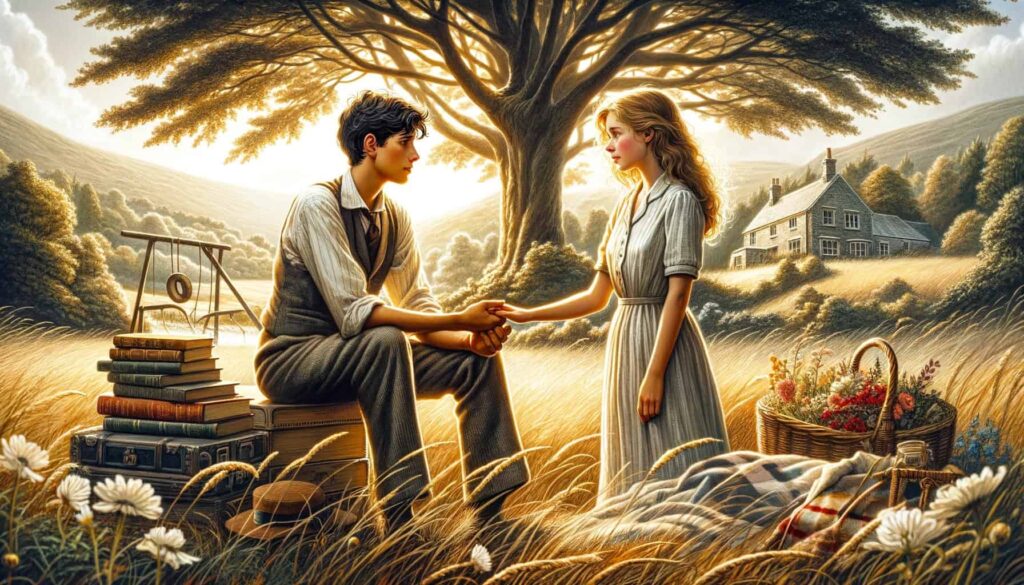
The novel delves into the emotional and practical difficulties of their life together. Henry’s absences, caused by his uncontrollable time travel, strain their relationship. Clare copes with the uncertainty and loneliness, showcasing her resilience.
Their love endures despite these hardships. The narrative juxtaposes moments of joy and sorrow, reflecting the complexities of their situation.
As the story progresses, Henry’s time travel takes a toll on his health. He foresees his own death and prepares Clare for a life without him. Their final moments together are poignant, emphasizing the strength of their bond.
“The Time Traveler’s Wife” concludes with Clare waiting for a future meeting with Henry, symbolizing enduring love. Audrey Niffenegger crafts a compelling tale that blends romance and science fiction, creating a unique and memorable narrative.
The Thorn Birds by Colleen McCullough
“The Thorn Birds” by Colleen McCullough tells the story of the Cleary family, spanning five decades. The novel is set in Drogheda, a sheep station in the Australian outback.
The forbidden love between Meggie Cleary and Father Ralph de Bricassart is central to the story. Their relationship, fraught with tension and passion, drives much of the novel’s plot.
Meggie, the only daughter in the Cleary family, grows up under the harsh realities of life on Drogheda. Her bond with Father Ralph begins when she is a child. Ralph, an ambitious priest, is torn between his devotion to the Church and his love for Meggie.
Their relationship evolves over the years, marked by moments of closeness and separation. Ralph’s struggle between duty and desire adds complexity to his character.
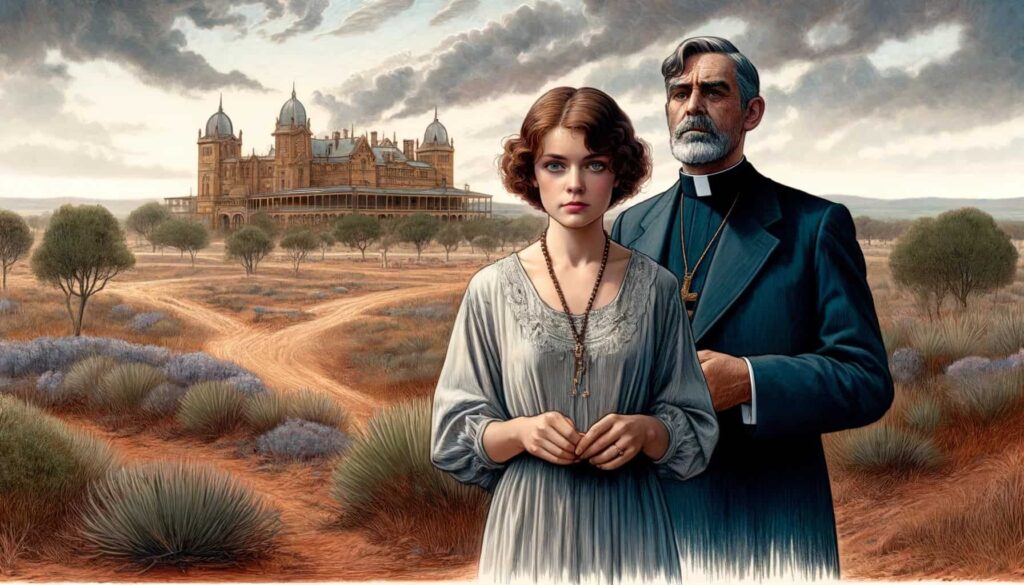
The Cleary family faces numerous trials, from personal tragedies to the challenges of managing the vast estate. Meggie’s marriage to Luke O’Neill, a pragmatic union, brings her further hardships. Despite their marriage, Meggie’s love for Ralph remains.
She eventually has a daughter, Justine, and a son, Dane, whose paternity raises questions. Dane’s tragic death becomes a pivotal point, deepening the novel’s exploration of love and loss.
As the story concludes, Ralph, now a cardinal, returns to Drogheda. He and Meggie confront their past and the consequences of their choices. Ralph’s death symbolizes the culmination of their intertwined fates.
“The Thorn Birds” highlights themes of forbidden love, sacrifice, and the enduring power of familial bonds. Colleen McCullough’s narrative captures the epic scope of the Cleary family’s saga, leaving a lasting impression on readers.
Bridget Jones’s Diary by Helen Fielding
“Bridget Jones’s Diary” by Helen Fielding follows a year in the life of Bridget Jones, a single woman in her thirties living in London. The novel is presented as Bridget’s personal diary, filled with her thoughts, worries, and daily escapades.
Bridget works in publishing and struggles with common issues like weight, smoking, and her love life. Her witty and self-deprecating humor endears her to readers.
Bridget’s romantic life revolves primarily around two men: her charming but unreliable boss, Daniel Cleaver, and the seemingly aloof but honorable Mark Darcy. Bridget’s relationship with Daniel is tumultuous, filled with passion and disappointment.
Daniel’s infidelity and lack of commitment eventually lead Bridget to end their relationship. This breakup marks a turning point in her personal growth and self-awareness.
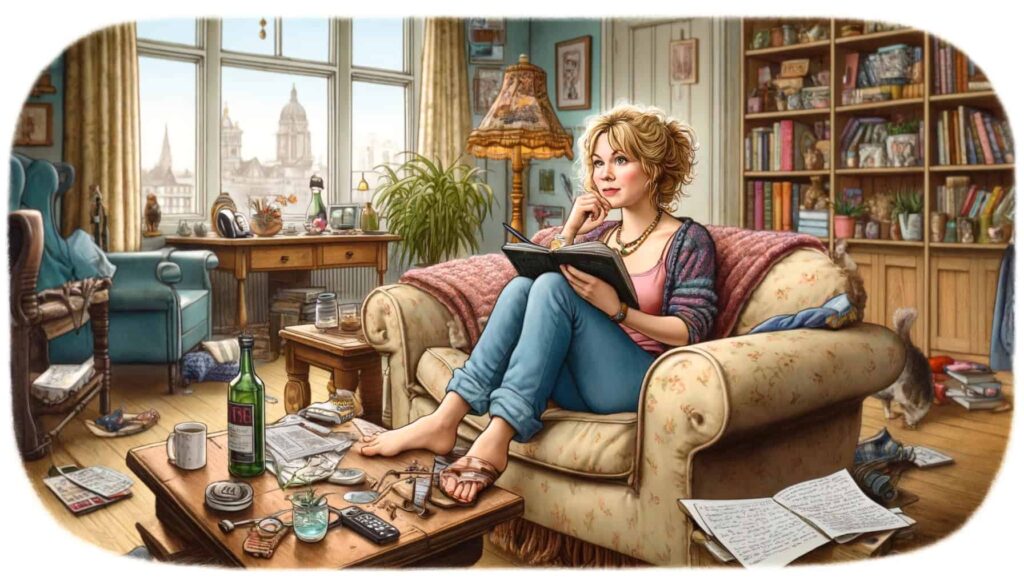
Mark Darcy, in contrast, represents stability and integrity. Initially, Bridget misjudges him, seeing him as arrogant and disinterested. Over time, she learns of his genuine kindness and support. Their interactions, though awkward at times, reveal a growing mutual respect and attraction.
Mark’s actions, like helping Bridget’s parents and supporting her career, gradually change her perception of him. The evolving dynamic between Bridget and Mark adds depth to the narrative.
Bridget’s diary entries also chronicle her friendships, career challenges, and family dramas. Her quirky and loyal friends provide comic relief and emotional support. Bridget’s parents’ marital troubles and her mother’s unexpected romance add additional layers to the story.
Through these experiences, Bridget navigates the complexities of modern life with resilience and humor. “Bridget Jones’s Diary” captures the essence of contemporary womanhood, blending romance and comedy in a relatable and entertaining way.
The Princess Bride by William Goldman
“The Princess Bride” by William Goldman blends adventure, romance, and humor. The story follows Buttercup, a beautiful young woman, and Westley, her true love. Westley, a farm boy, leaves to seek his fortune but is reported dead at the hands of the Dread Pirate Roberts.
Heartbroken, Buttercup agrees to marry Prince Humperdinck, though she does not love him. This setup introduces the novel’s central conflict.
Westley, disguised as the Dread Pirate Roberts, returns to rescue Buttercup. He must face a series of challenges, including duels with Inigo Montoya, a master swordsman seeking revenge for his father’s murder, and Fezzik, a gentle giant.
Westley’s cleverness and skill enable him to overcome these obstacles. He reveals his true identity to Buttercup, rekindling their love. Their reunion is marked by wit and bravery.
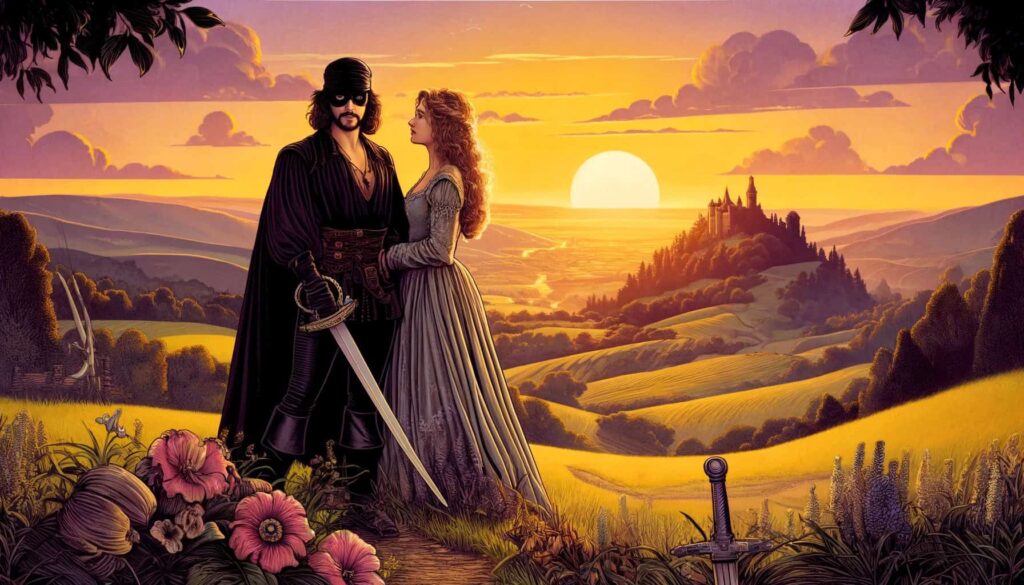
Prince Humperdinck, the antagonist, plots to kill Buttercup and frame a neighboring country to start a war. Westley and his new allies—Inigo and Fezzik—work to thwart Humperdinck’s plan.
The trio’s journey is filled with peril and excitement, from navigating the Fire Swamp to infiltrating the Prince’s castle. Inigo’s quest for vengeance against Count Rugen, the six-fingered man who killed his father, adds depth to the story.
The novel concludes with a dramatic rescue. Westley, though incapacitated, uses his wits to outsmart Humperdinck. Inigo avenges his father, fulfilling his life’s goal. Buttercup and Westley escape together, reaffirming their love.
“The Princess Bride” combines fairy tale elements, satire, and adventure, creating a timeless narrative. William Goldman’s storytelling captivates readers with its romance, humor, and action blend, making it a beloved classic.
Eleanor & Park by Rainbow Rowell
“Eleanor & Park” by Rainbow Rowell tells the story of two misfit teenagers who find solace in each other’s company. Set in the 1980s, the novel introduces Eleanor, a girl with vibrant red hair and a troubled home life.
She struggles with bullying at school and faces domestic issues. Park, a half-Korean boy, feels out of place due to his heritage and interests. Their shared bus rides become the foundation of their bond.
Their relationship starts silently, with Park noticing Eleanor’s unique style and her interest in his comic books. Gradually, they begin to share music and books, fostering a deeper connection.
Eleanor’s guarded nature and Park’s gentle patience create a tender dynamic. Their relationship provides both with an escape from their individual struggles. Rowell portrays their growing affection with subtlety and realism.
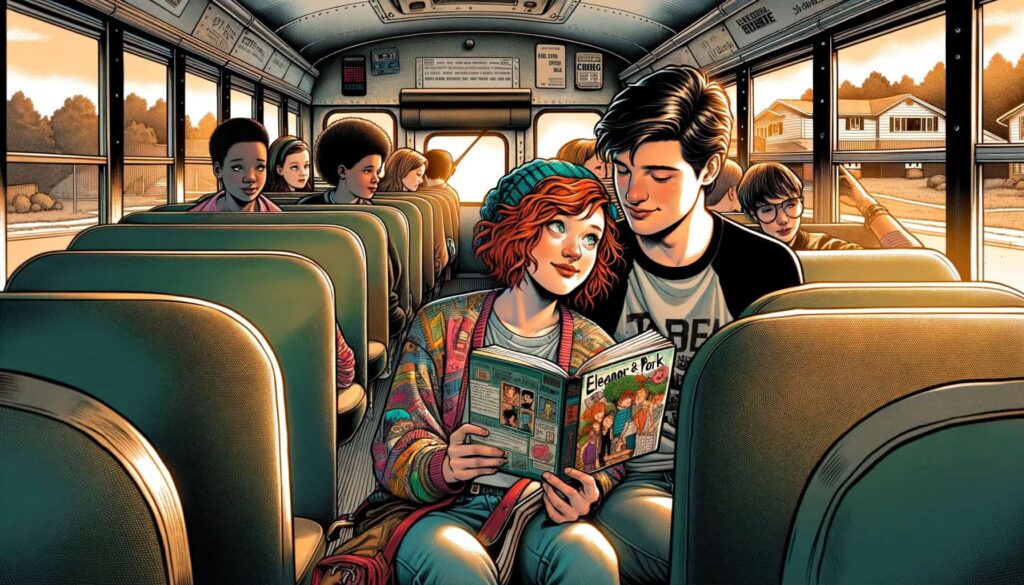
Eleanor’s home life is a source of constant tension. Her stepfather’s abusive behavior and her family’s financial struggles weigh heavily on her. Park’s supportive family contrasts sharply with Eleanor’s chaotic environment.
Despite their differences, they support each other. Park offers Eleanor a safe haven while she brings out his courage and confidence. Their relationship grows as they navigate the complexities of adolescence and personal challenges.
The story reaches a climax when Eleanor’s situation at home becomes unbearable. She decides to leave, seeking safety and a better future. Park drives her to her uncle’s house, marking a poignant moment in their relationship.
The novel ends with Eleanor and Park separated by distance, but their bond remains. “Eleanor & Park” captures the intensity and vulnerability of first love, showcasing Rowell’s ability to write deeply empathetic and relatable characters.
The Fault in Our Stars by John Green
“The Fault in Our Stars” by John Green explores the lives of Hazel Grace Lancaster and Augustus Waters, two teenagers who meet in a cancer support group. Hazel, who has thyroid cancer that has spread to her lungs, struggles with the limitations and uncertainties of her illness.
Augustus, an osteosarcoma survivor with a prosthetic leg, brings a new perspective and vitality to Hazel’s life. Their shared experiences with cancer form the basis of their deepening relationship.
Hazel and Augustus bond over their love of literature, particularly Peter Van Houten’s novel An Imperial Affliction. The book’s unresolved ending prompts them to seek out the author in Amsterdam, hoping for answers.
Their trip to Amsterdam becomes a pivotal moment in their relationship. They share intimate and profound experiences, deepening their connection. Hazel opens up to Augustus in ways she never thought possible, and Augustus reveals his own fears and vulnerabilities.

Augustus’s cancer returns aggressively, reversing their roles as he becomes the one in need of support. Hazel stands by him, offering strength and love. Their relationship faces the harsh realities of their illnesses, but their bond remains strong.
Green’s portrayal of their love highlights the intensity and fragility of life. The novel addresses themes of mortality, love, and the search for meaning in the face of terminal illness.
The story culminates in Augustus’s death, leaving Hazel to cope with the loss of her first love. Augustus’s final letters to Hazel and Van Houten provide closure and insight. “The Fault in Our Stars” concludes with Hazel finding a sense of peace and understanding.
John Green’s novel captures the beauty and tragedy of young love, offering a poignant look at life and loss through the eyes of two unforgettable characters.
